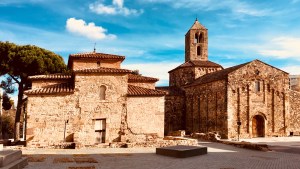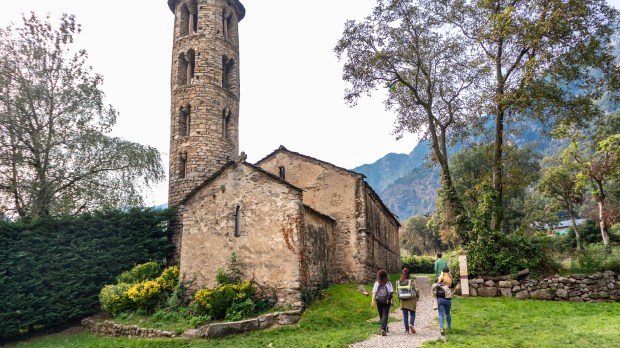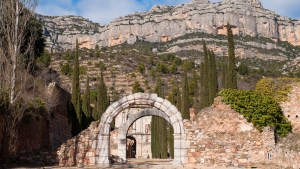The Principality of Andorra is a small, landlocked country situated in the Pyrenees, between France and Spain. The sixth-smallest state in Europe, Andorra is the world’s 16th-smallest country by land and the 11th-smallest by population – only 468 square kilometers in size. Despite its size, it is a land of great natural beauty and rich cultural heritage.
Some of the most remarkable examples of this cultural heritage are found in its Romanesque churches. These churches date back to the 11th and 12th centuries, and are among the most significant examples of Romanesque art not only in the Pyrenees, but in all Europe.
Romanesque architecture is typical of medieval Europe. The esque in Romanesque indicates it is not fully Roman, but a fusion of Roman, Carolingian, Byzantine, and even local traditions that can be distinguished in different local styles. Andorran and German Romanesques are not the same thing. Whereas some of the most impressive examples of Romanesque art can be found in Spain and France, the style was predominant everywhere in Europe but particularly in areas in which an Eastern Byzantine tradition was preserved (as in the case of Ravena, in southern Italy).
Andorran Romanesque, because of its geographic location, is indeed unique: At a time when most of Spain was under Muslim rule, Christianity thrived in the north of the Peninsula, Andorra included, mainly due to its proximity to Charlemagne’s Marca Hispánica, the military buffer-border zone separating the Umayyad Caliphate of Al-Andalus and the Frankish Carolingian Empire established in the 8th century.
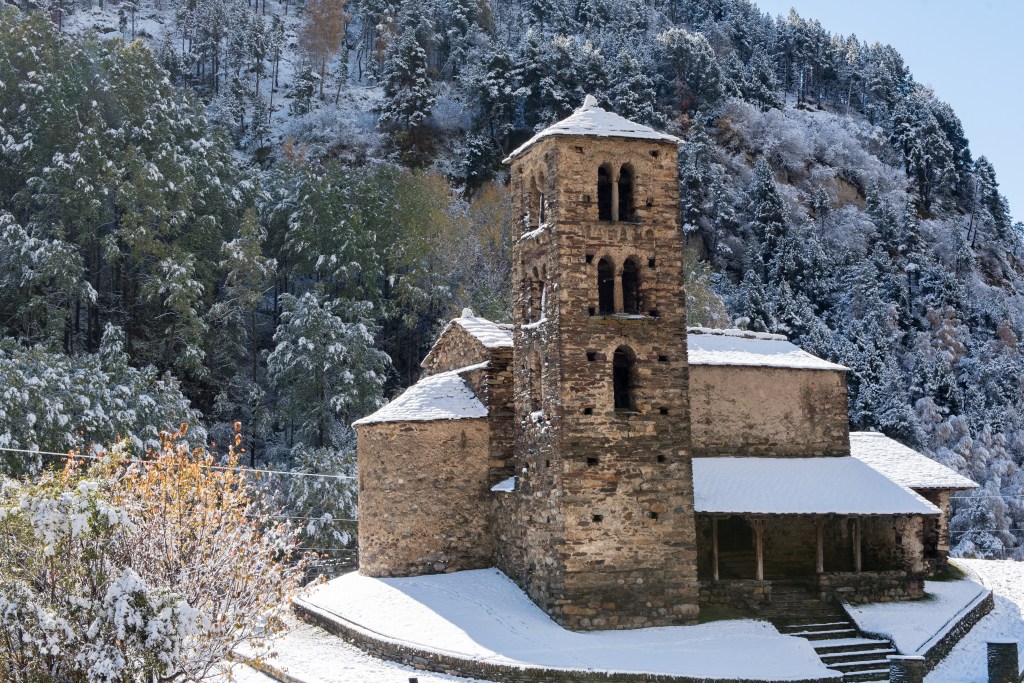
Also, the expansion of Romanesque art was to a great extent a consequence of the growth of monasticism in the 10th and 11th centuries. Large monastic orders (Cistercian, Cluniac, and Carthusians mainly) sprang up at this time and quickly gained popularity and influence, establishing churches, monasteries, abbeys and other institutions (including monastic schools, which would soon evolve into universities) all over Western Europe. Because of its proximity to these great French abbeys, Andorran Romanesque developed rather quickly. These buildings were much larger than previous ones, as they had to accommodate an always-increasing number of monks, and grant access and hospitality to pilgrims.
Romanesque architecture is characterized by its rounded arches, thick walls, and sturdy pillars. The Romanesque churches in Andorra are no exception. They were built, primarily, to withstand the harsh mountain climate: Andorra La Vella is the highest capital city in Europe, at an elevation of 1023 meters above the sea level.
One of the most famous Andorran Romanesque churches is the Church of Santa Coloma. In fact, it dates from the pre-Romanesque period, and was built between the 9th and 10th centuries – making it one of the oldest churches in the country. The Church of Santa Coloma is known for its unique circular apse and its frescoes, which are among the most well-preserved examples of Romanesque art in Europe. These frescoes have traditionally been attributed to the Master of Santa Coloma, although they are not the work of just one person. This occurs with many of the Romanesque murals in Andorra and the Pyrenees: they are the works of nomadic painter workshops that received the same training, which has led experts to talk about schools such as the one in this case – that of the Master of Santa Coloma.
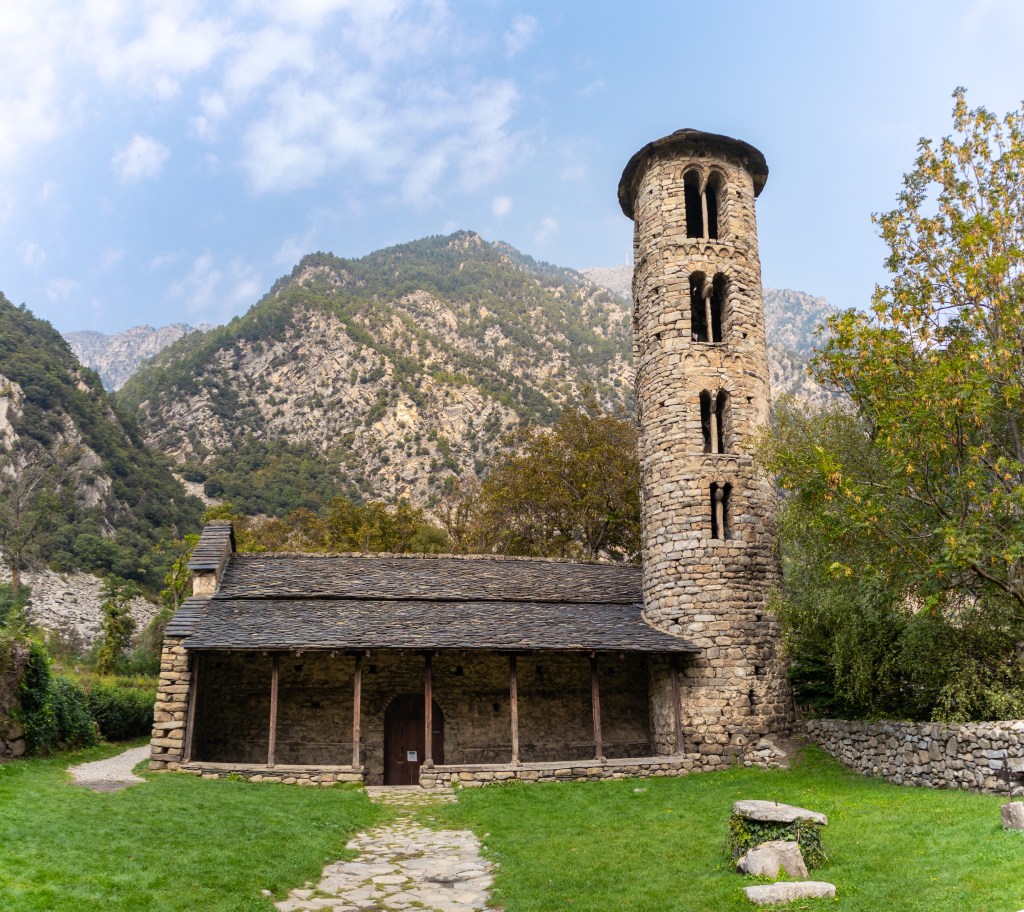
Another significant Romanesque church in Andorra is the Church of Sant Joan de Caselles. This church was built in the 11th century and is notable for its exceptionally tall bell tower and its beautifully decorated apse. Its frescoes are some of the most impressive examples of Romanesque art in the country. Behind the grate of the altar there is an altarpiece dating from the 16th century with scenes from the life of St. John the Evangelist, the patron of the church.
These examples show how Andorran Romanesque churches are a testament to the rich cultural and religious heritage of the country, and a reminder of the skill and craftsmanship of the medieval builders who constructed them. These churches are not only important examples of Romanesque art in Europe, but also serve as a place of worship for the Andorran people to this day.
